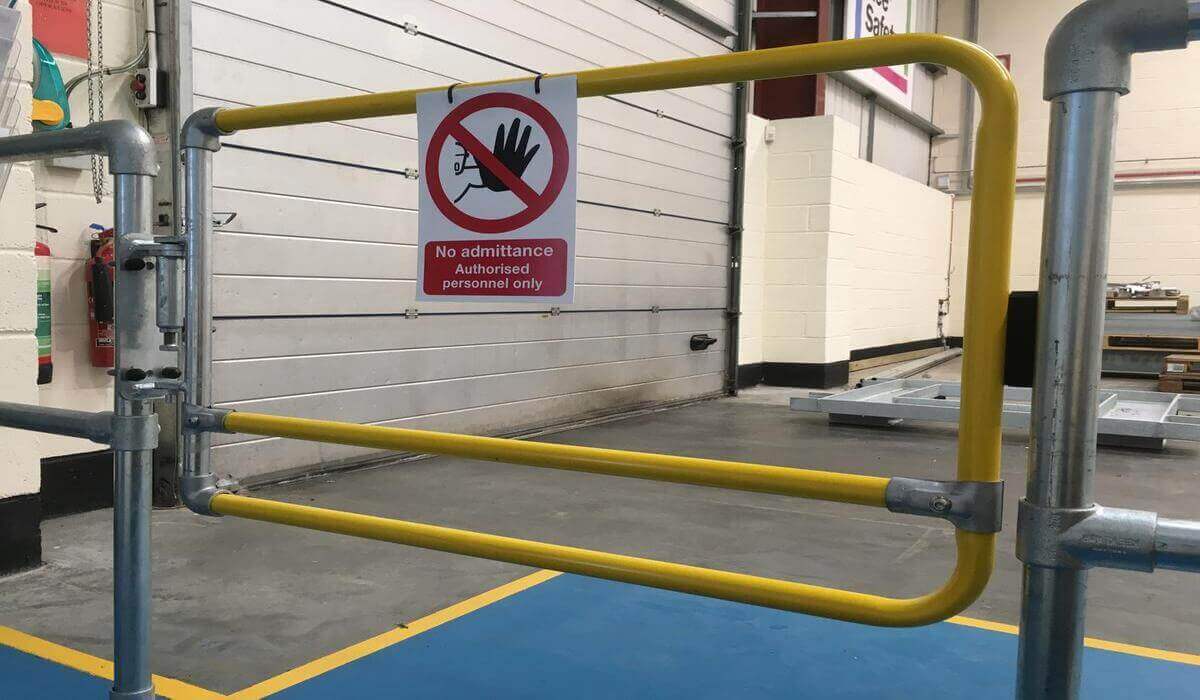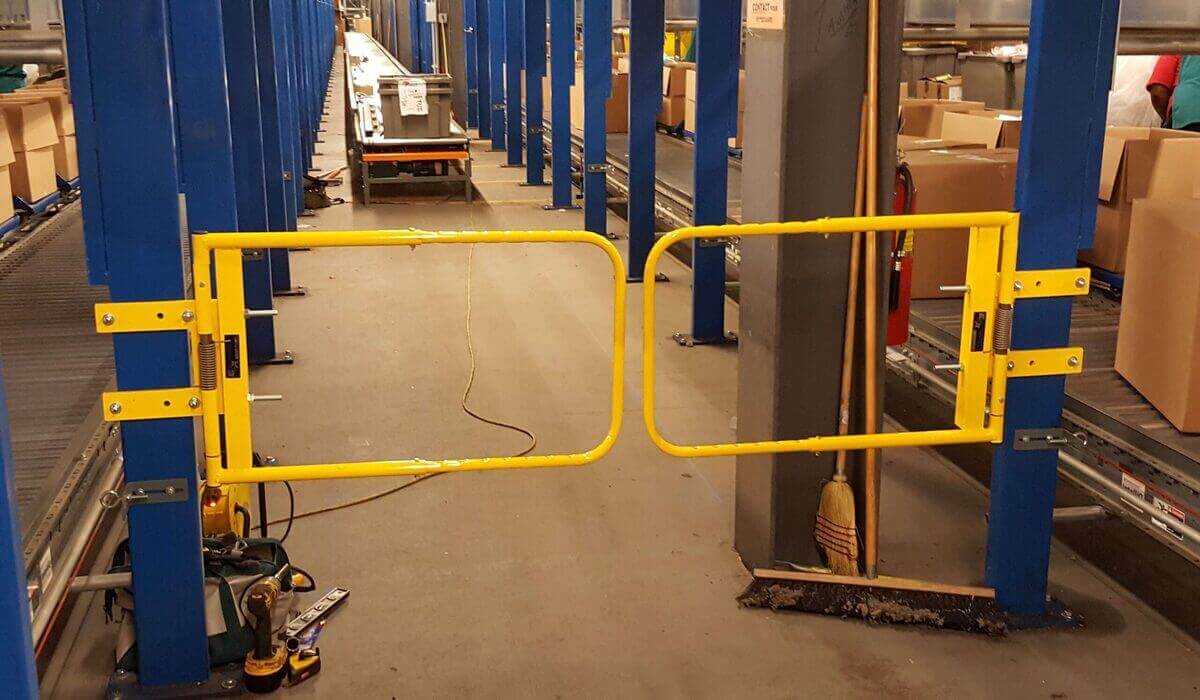As a business owner or safety manager, you know you have an obligation to minimize fall hazards for your employees. You faithfully follow OSHA fall protection requirements, and safety is Paramount to your facility. This means that you have installed guardrails around dangerous machinery, equipment, and materials. You have protected the leading edges of elevated surfaces such as mezzanines and walkways.
While protecting these areas is important, workers still need access to them. When it comes to choosing an industrial safety gate that suits the needs of your facility, there are several factors to consider.
1. Does OSHA require industrial safety gates?
The best answer to this question is that OSHA rarely offers specific ways to reduce the risk of falls. The role of OSHA’s requirements for fall protection is to provide potential solutions to problems and to regulate those specific solutions. For example, OSHA stipulates that you must use a fall protection system and list some equipment suitable for that application. In some cases, the offset will do the trick. Other times, safety gates are an ideal way to protect floor openings, stairways, or elevated platforms.

2. Do I really need an industrial safety gate?
The answer is — it depends. Are you confident that every elevated surface, every ladder entrance, every floor opening, and all other potential fall hazards have been addressed without them? If you are not 100% sure that you have eliminated all possible fall hazards in the facility, then safety gates are certainly worth considering. You care about your employees and the last thing you want is for anyone to fall and get hurt.
You also want to protect the finances of your business, and accidents can slow down production and injured employees can cause many other financial hardships. Adding security in place will help protect your workers, keep your business in OSHA compliance, and ultimately save you money.
3. The benefits of using industrial safety gates
One of the biggest benefits of installing additional devices such as metal flat doors in a fall protection system is safety. Since staff must actively open the gates to enter restricted areas, traffic flows are reduced, security is increased, and visitors and other unauthorized individuals are prevented from entering. In addition, the self-closing metal turnstiles automatically rotate and close after each use, ensuring that traffic is always under control. By installing industrial safety gates, you can also increase employee safety awareness and make the workplace safer for everyone.
4. OSHA requirements for industrial safety gates
If you decide that an industrial safety gate is the best way to protect your facility, keep the following in mind. OSHA’s requirements for fall protection require that any industrial safety gate you install must comply with the following requirements:
- The safety door must close automatically.
- The door must slide or swing from the opening.
- Top railings, middle railings, or equivalent intermediate members must meet the requirements for guardrails in OSHA 1910.29 (b)(13)(i).
- The height of the top rail of the industrial safety gate must be 42 inches, plus or minus 3 inches.
- The opening cannot be larger than 19 inches.
- The top rail must be able to withstand a 200 lb load.
- The middle rail must bear a load of 150 pounds
You probably already know all of this, but all of these factors are important when evaluating the features and functionality of your ideal gate solution.

5. How to choose the right industrial safety gate?
When choosing a safety door, as with all fall protection systems, you want to get it right the first time. Some of the things you need to consider when buying an industrial safety gate for your facility include:
1) Why did you install it?
The primary reason for installing safety doors is worker safety and OSHA compliance. However, it is more important to define the purpose of the security door. How will it improve worker safety? Whether you want to restrict access to an area, provide fall protection, or warn of danger, know why safety doors are important to you.
2) Where is the door to be installed?
The type of facility you operate and the area of the building where the facility is installed will determine the materials that should be used for your security door. For example, if your application is located in a hot, humid location, you will need to choose materials that will not rust.
3) How big is the opening?
Whether you need a security door that allows one person to pass through at a time, a larger door big enough to accommodate multiple workers, or a forklift carrying pallets, you have options. In fact, metal flat doors come in a variety of styles and sizes to suit all types of applications.
4) Are there industry requirements?
Your industry will determine the type of safety doors your facility should have, the materials from which they are manufactured, and their surface treatment. For example, if your plant is involved in processing raw food, you may need stainless steel safety doors (with non-peeling paint finishes) rather than other materials. On the other hand, if you are using high-voltage electricity in your facility, you may need non-conductive materials.
5) Who is installing the security gate?
It is important that you have a competent person to oversee the installation of any fall protection systems or components within your facility. People should understand why safety gates are installed, how to install them properly, the OSHA regulations governing their use, and how to operate safety gates safely.

6. Conclusion
Safety doors are critical when it comes to protecting workers from fall hazards caused by openings, mezzanines, and other elevated surfaces. When you’re ready to install safety doors in your facility that meet OSHA fall protection requirements, trust us. If you have any questions you would like to consult, please feel free to contact Aotons.





Leave A Comment